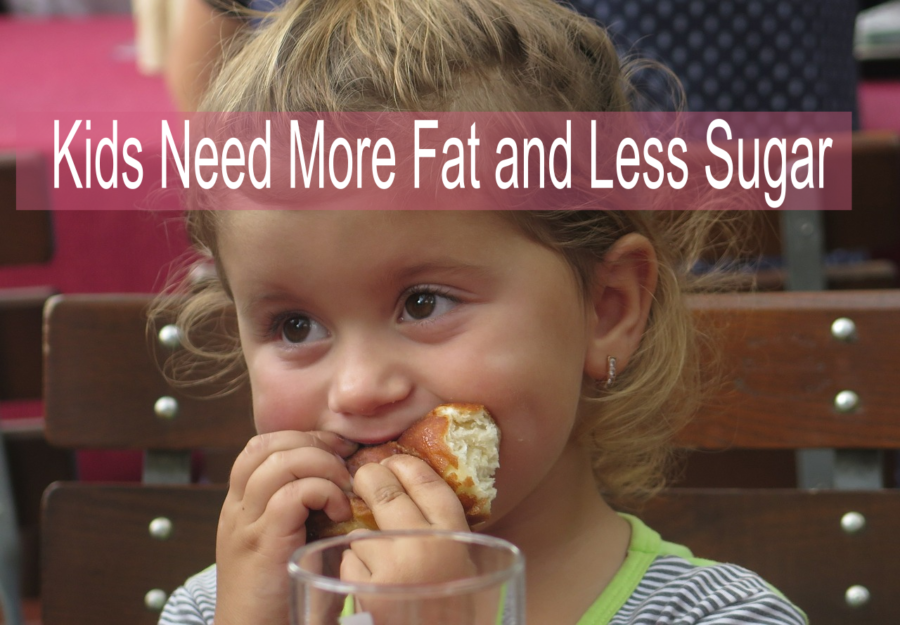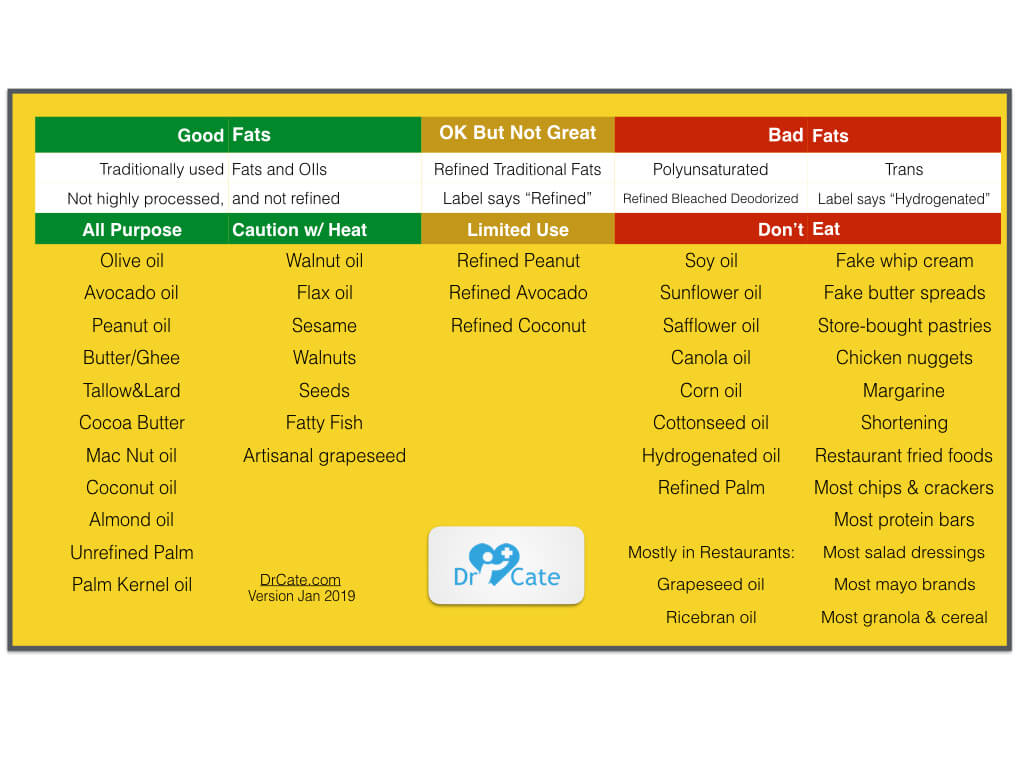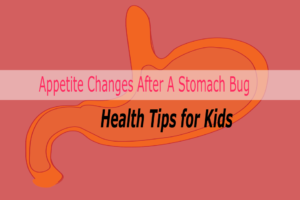More Fat and Less Sugar – a good rule for everyone
I notice a lot of parents feeding their kids the same way they feed themselves – diet sodas, low fat foods, processed foods with added fiber that needs to be fortified because nutrients were destroyed in the processing…it goes on and on. We need to be eating more fresh, whole foods.
In this article I want to focus on fats vs sugar particularly when it comes to feeding children. Generally children are more easily distracted and less focused than adults because of their age. This is natural but their focus, their energy level and their overall health can be crushed by a bad diet. This needs fixing or there will be more health problems coming.
Fat is a necessary nutrient. We need it. Such nutrients are especially important for growing healthy children. Fat has received a bad name over the years with all this low fat diet nonsense. It’s not about quantity, it’s about quality of fat. We want to eat fats that are fresh and not rancid, overcooked (fried foods), or overly processed.
Any products that say “cold pressed” and “unrefined” are the best nutritious fats and oils i.e. Avocado oil, Butter, Coconut Oil, Duck Fat, Ghee, Lard, Olive oil, Peanut oil, Tallow, Sesame oil, Flax seed oil, Walnut oil, Almond oil, Macadamia nut oil
The worst are hydrogenated oils and refined polyunsaturated fatty acids (PUFAs) seed oils otherwise known as “vegetable oils” (these do not include olive, peanut and coconut which are good general good as long as they are unrefined).
Sugar. The bottom line – everyone should know by now sugar is a big problem and needs to be limited – period. The quality of sugar doesn’t matter – the problem with sugar is mostly about quantity. People say, “how about fruit”. I say, you had enough fruit! For the love of Pete, try eating a vegetable! A good ratio is twice as many vegetables to fruits – 2:1.
On a personal note, I noticed my daughter having trouble in school getting headaches, lacking focus and running out of steam by the afternoon. I found out she was going for more than 3 or 4 hours without a good snack in between. It was crazy. She’d have a protein and fat rich breakfast at home around 7pm. In some school years they would send her out for recess before having lunch and that could be 4 or 5 hours in between meals.
As I understand it, the school let them have a snack in between but I was giving my daughter fruit-type snacks at first and it wasn’t keeping her satiated. My thinking based on good dietary practice was that fruits should be eaten on their own, separate from main meals because together they can disturb the digestive process.
When I realized the time in between meals was too long I needed to change the snack type to something that contains more fat. Normally we would think – ah, peanut butter but nowadays with peanut allergies it’s not allowed.
I want to give an action packed snack so I bought a whole grain style raisin bread and I smeared on regular butter with raspberry jam and a 4 or 5 dark chocolate chips onto a slice of bread and folded in half.
The key here is I added fat to a snack to keep the metabolism running longer. Sugar is like added kindling to the digestive fires (burns rapidly) but fat is like adding a log – burns longer.
Another choice I discovered along the way was Sun Butter made from sunflower seeds although there is sugar added to Sun Butter.
So if you are trying to regulate your child’s energy levels and keep them even, it’s good to have them eat every few hours. Make sure sugar is limited and fat is part of the meal.
Also note that some people have trouble digesting fat so it’s important to take it in small, frequent meals throughout the day rather than in one big meal at the end of the day.
Bon appetite!
Here’s a great resource on fats –










